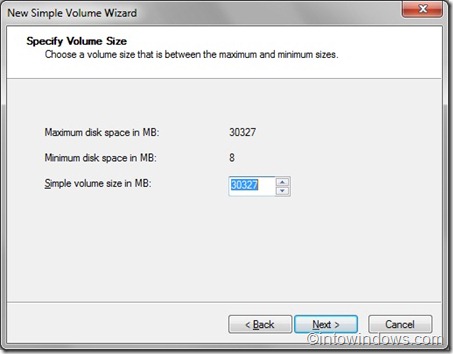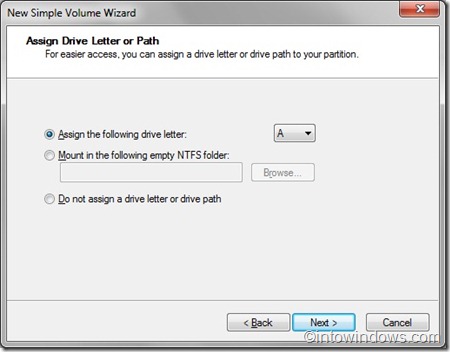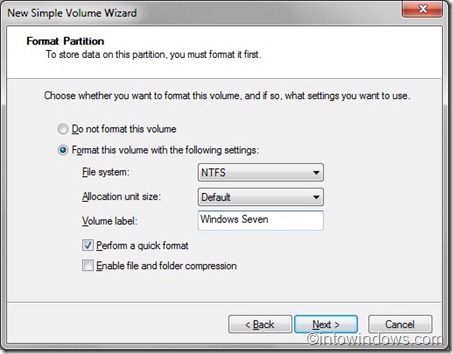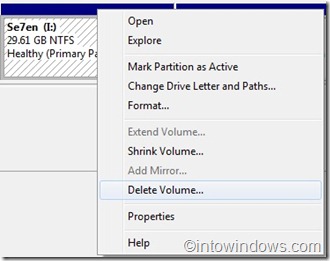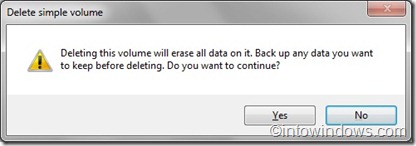Computer users who have upgraded from Vista to Windows 7 might not see drastic changes in the Disk Management tool. But users who have migrated from Windows XP will find this tool very powerful.
The Disk Management tool in Windows Windows 7 is very helpful to create, delete, extend and shrink partition. Even though it doesn’t offer options to perform advanced tasks it offers all the options that you may use regularly. You can now even create/attach/detach VHDs right from the Windows Disk Management without using third party tools.

Coming to creating/deleting a partition, it’s very simple with the new Disk Management tool. You need have an unallocated space to create a new partition and you need make sure that the partition has no essential files before deleting it.
How to create a partition in Windows 7:
Step 1: Type diskmgmt.msc in Start menu search field and hit enter to open Disk Management window. As an alternative, you can right-click on desktop computer icon, select Manage, and then select Disk Management (under Storage).
Step 2: Right-click on the unallocated space and select New simple volume option to see New Simple Volume Wizard. Click Next to proceed.
Step 3: Enter the amount of disk space that you want to create, and click Next button.
Step 4: In the next step, assign a drive letter, click Next button again.
Step 5: Enter a name for the new volume and click Next button.
Step 6: Click Finish button to complete the procedure. Your new partition is ready to use.
Users who’re looking for advanced tools should check out Partition Wizard Home edition software. How to backup all data without booting into Windows guide might also help you.
How to delete a partition in Windows 7:
NOTE: Make sure you have backed up all data before proceeding to delete the partition.
Step 1: Type diskmgmt.msc in Start menu search field and hit enter to open Disk Management window.
Step 2: Right-click on the partition that you want to delete and select Delete volume.
Step 3: You will see the warning message. Click Yes button to continue.

